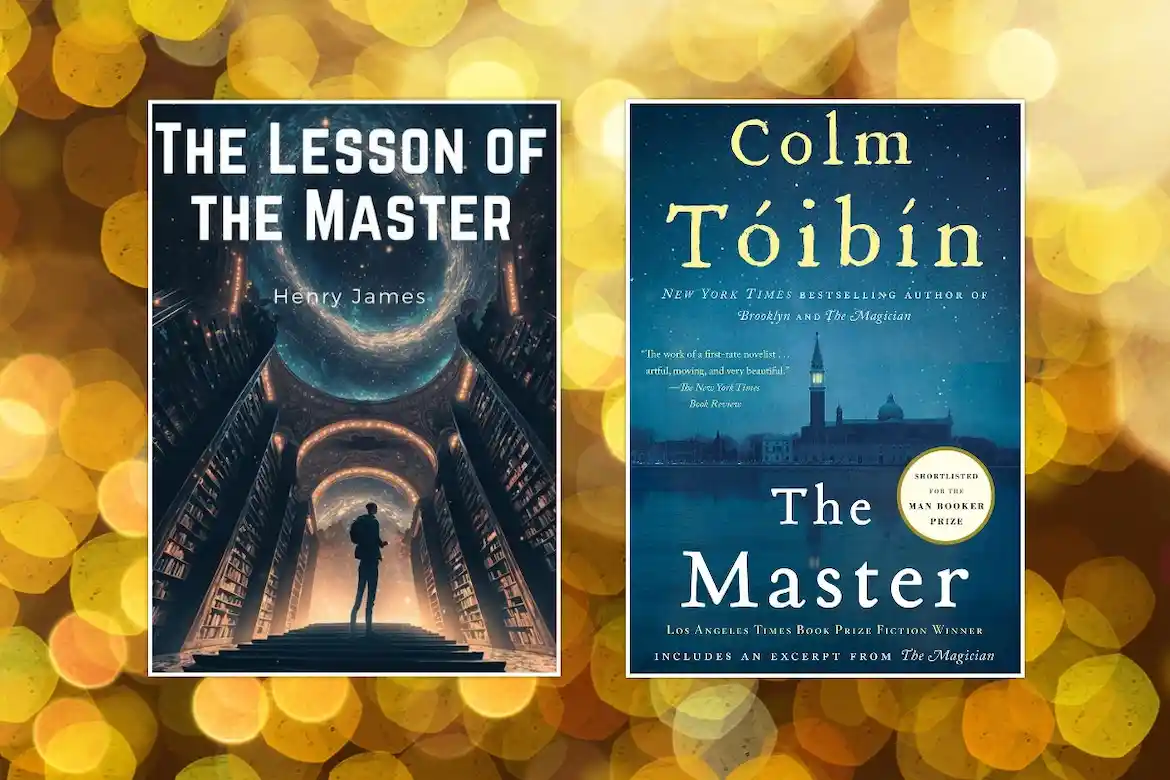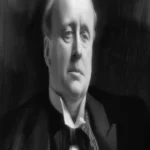Colm Tóibín, in his introduction to the 2007 edition of Henry James’ classic novella The Lesson of the Master, cites a note James made in 1888—an idea that came to him after reading the memoir of a colleague:
…it occurred to me that a very interesting situation would be that of an elder artist or writer, who had been ruined (in his own sight) by his marriage and its forcing him to produce promiscuously and cheaply – his position in regard to a younger confrère whom he sees on the brink of the same disaster and whom he endeavors to save, to rescue, by some act of bold interference – breaking off the marriage, annihilating the wife, making trouble between the parties.
You can find and buy the books we recommend at the LitStack Bookshop on our list of LitStack Recs.

In This LitStack Rec of The Lesson of the Master and The Master
The Lesson of the Master by Henry James


In 1888, James published The Lesson of the Master. The book centers on two writers, one a celebrated elder, and the other, a striving newcomer. The titular Master, Henry St. George, is a celebrity novelist whose best work is behind him—though luminary that he is, still garners accolades and attention. The newcomer is Paul Overt, the aptly named open-hearted young writer who by all accounts is poised for greatness. Overt idolizes St. George, and as the novella opens, meets him on an weekend at a country home outside London. He learns St. George has read his work—and admires it—the first of a series of discoveries that puts his reverence for the Master in a different light.
While St. George and Overt strike a different contrast to Toibin and James, there is still the resonance of two writers, their circumstances thrown into contrast by time and experience. Of imagining Henry James for The Master, Toibin wrote:
“I began to imagine James. He came to me as…a distant, refined, mostly silent figure, middle-aged, haunted by flickering figures from the past, animated mostly by work.”
On that same weekend, Overt meets the luminous Marian Fancourt, a young woman who’s read all of St. George, along with his own comparably meager output. Overt is immediately struck by Marian’s understanding, her beauty, her insights into art, and especially his work, and will soon fall in love with her, imagining her as the ideal champion and supporter. These two introductions set into motion the polarities of the novella: of love and work, art and commerce, and the sacrifice necessary to realize the greatest achievements. The Lesson of the Master is about the conflict of life and art, of failure and success, and the forfeiture art demands.
Without giving too much away, one writer’s motives in this story eventually prove false. Yet the pleasure of rereading James, especially in this shorter work, is not so much the symbols in this double portrait, but the way, with repeated readings, the language continually reveals the characters. Their motives and tendencies appear clearer as familiarity peels the layers away. James has fun too, with the snobbery of those who support artists but have not the taste for self-denial. He takes careful aim at Mrs. St. George, for one, a woman who values materialism and social status over her husband’s “rare gifts.”
As events move forward, the reader sees the crack in St. George’s image long before Overt does. From that first encounter, the young writer’s image of the Master falls into question. With their growing familiarity, the elder writer’s underpinnings begin to show, and reveal him to be as husband whose wife burns the manuscripts she doesn’t feel are good enough, who won’t let him smoke, and whose snobbish attitude demands an income that can only be achieved by writing books of lesser quality.
That doesn’t dim Overt’s reverence for St. George, who does in fact have a lesson for his young admirer, and it is this: Art can only be great, he tells him, if the artist rejects the trappings of life, if he denies love, marriage, children, and frees his art from the demands of providing for others. Only by rejecting attachments, responsibility, and normalcy with its all-consuming interconnections can the artist be free to make great art. And though the ambitious young writer aims for greatness in his work, he hopes to succeed in love, and art.
The Master by Colm Tóibín


Colm Tóibín’s The Master, stands in conversation with James’ book, a historical novel that follows James as an established author in Paris, and London, who comes of age abroad and in Albany and New York City during the American Civil War.
Shortlisted for the 2004 Booker Prize, and called a “beautiful, subtle illumination of Henry James’s inner life” by The New York Times, The Master follows James from January 1895, when his play, Guy Domville, opens to a disastrous reception in the London theater, to October 1899, during his final years at Lamb House, his secluded retreat in the village of Rye, Sussex. In flashback, we meet Henry’s beloved sister, Alice James, before her death from breast cancer at age 43, and his youthful passion for a young Oliver Wendell Holmes, which like so many loves in James’ life, remained secret. There are aristocrats both Irish and English, and writers, like Oscar Wilde, whose popularity during the failure of Guy Domville further erodes James’ confidence.
Tóibín also charts the emotional undercurrents of what would now be understood as Henry James’ chronic depression, the social isolation of his work, and the pain he suffered from months of hand-writing manuscripts (miraculously relieved when James discovers the dictograph, and thereafter dictates his work for a stenographer to transcribe). Tóibín meticulous research of James’ letters and biographies results in a luminous interior narrative that takes us as deeply into James’ experience—much like a novel by Henry James would. Tóibín wrote The Master, as James wrote his novels, by hand, seated in a hard chair, and like James, Tóibín is a man of letters—a novelist, short story writer, essayist, and critic. Though unlike James, the adult Tóibín never had to conceal his homosexuality, and in The Master, we see James channeling the intense, deeply felt, and hidden feelings into his work, living secreted throughout his life. The passages in The Master that chart James’ construction of plot and character in Portrait of a Lady are especially magnificent.
Tóibín has written a lovely essay on Henry James, which you can read here.
—Lauren Alwan
About Henry James
Henry James (1843-1916), the son of the religious philosopher Henry James Sr. and brother of the psychologist and philosopher William James, published many important novels including Daisy Miller, The Wings of the Dove, The Golden Bowl, and The Ambassadors.
About Colm Tóibín
Colm Tóibín is the author of ten novels, including The Magician, winner of the Rathbones Folio Prize; The Master, winner of the Los Angeles Times Book Prize; Brooklyn, winner of the Costa Book Award; The Testament of Mary, and Nora Webster, as well as two story collections and several books of criticism. He is the Irene and Sidney B. Silverman Professor of the Humanities at Columbia University and has been named as the laureate for Irish fiction for 2022-2025 by the Arts Council of Ireland. Three times shortlisted for the Booker Prize, Toibin lives in Dublin and New York.
Other Titles by Henry James

Other Titles by Colm Tóibín

Other LitStack Resources
Be sure and look at our other LitStack Recs for our recommendations on books you should read, as well as these reviews by Lauren Alwan, and these reviews by Rylie Fong, Allie Coker, and Sharon Browning.
You can find and buy the books we recommend at the LitStack Bookshop on our list of LitStack Recs.







